
14 minute read
CONTINGENCY PLAN FOR THE 7.2 MAGNITUDE EARTHQUAKE
RESULT I
CONTINGENCY PLAN FOR THE 7.2 MAGNITUDE EARTHQUAKE
Advertisement
By Geraldina “Levy” M. Gutierrez
◀◀ just a stone’s throw away from Stonecrest in San Pedro and Juana
Complex 3 in Biñan. There’s another fault line along the old Carmona PNR station, near San Vicente River, that runs south to Barangay San Jose, GMA. The fault hits through highly populated infrastructures: the public market in San Jose Road, an Iglesia ni Cristo chapel, an Evangelical Fellowship Church, the San Jose Manggawan Catholic Church, the Maranatha Community of Praise and Ministry, and MMIM GMA Chapter. A separate fault line coming from Juana 3 Complex in Biñan reaches the Mormon Church complex. The West Valley Fault Line in Cavite courses
The fault line starts in San Jose, General Mariano Alvarez, which is through Laguna.
▶▶ In this image, the Manila Southwoods Golf and Country Club may appear to be spared from the fault line, but that does not guarantee safety from a destructive earthquake. Also in the image is a small fault line along San Lazaro Drive between Governor’s Drive and Carmona River in Mabuhay, Carmona, Cavite.

▶▶ Several fault lines were discovered downhill of the Canyon Grand Residence at San Lazaro Drive, and outside Carmona Estates in Lantic. The fault lines course along the Carmona River southwards to the boundary between Silang, Cavite and Biñan, Laguna, where the DLSU-Laguna Science and Technology Complex is located.


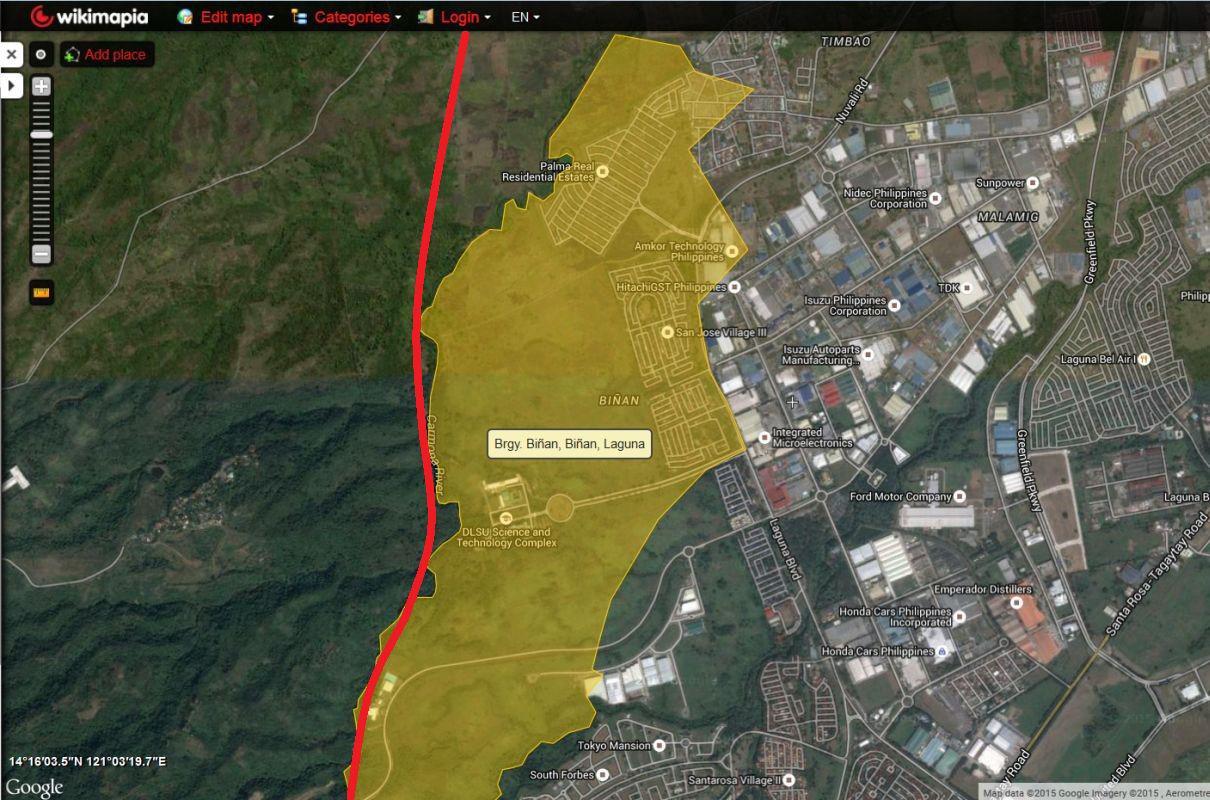
▶▼ The West Valley Fault Line in Cavite starts at the northern part of South Forbes Golf City and crosses San Miguel Wedgewoods, passing through St. Scholastica’s College, South Forbes City College, the southern portion of South Boulevard Commercial area, Standford Suites, and Miami Villas in Inchican, Silang, Cavite. The fault then crosses the Sta. Rosa-Tagaytay Road at Santo Domingo, Sta. Rosa, Laguna.

A new fault line was recorded in Casile, Cabuyao, between Adventist University of the Philippines and Canlubang Golf and Country Club. It passes through the western side of the Golf Club and reaches Mabato in Calamba.
(Source: West Valley Fault Systems Atlas: Released by Philippine Volcanology and Seismology or PHIVOLCS) Background: (taken from the Contingency Plan Guidebook released by NDRRMC)
The Philippines, situated along the Pacific Ring of Fire and the Typhoon Belt, is prone to natural calamities. Typhoons, earthquakes, volcanic eruptions, and tsunamis threaten the lives of the people.
Given the country’s disaster risk profile, Republic Act (RA) 10121, otherwise known as the “Philippine Disaster Risk Reduction and Management Act of 2010,” was enacted on May 27, 2010. Prior to its enactment, government actions relative to disaster management had been largely concentrated on the response phase. Hence, most of the resources were devoted to the needs of the affected population in the aftermath of a disaster. RA 10121 paved the way for the institutionalization of a proactive “disaster risk reduction and management” approach, or DRRM, defined under the law as the “systematic process of using administrative directives, organizations, and operational skills and capacities to implement strategies, policies and improved coping capacities in order to lessen the adverse impacts of hazards and the possibility of disaster.”
As provided for in RA 10121, one of the DRRM mechanisms that can be adapted to PROJECT VIPER is “Contingency Planning.” The strategy entails the formation of preparedness measures and the arrangement of response priorities before disaster strikes. Contingency planning works well with the other DRRM tools in ensuring the growth of safe, adaptive, and disaster-resilient communities toward sustainable development.
▶▶ Aerial Map 3 barangays in Silang Traversed by WVF. Top: Barangay Inchican; middle: CBrBr; bottom: Puting Kahoy



DEVELOPING A CONTINGENCY PLAN FOR CAVITE
A. Planning Process
1.
2. The crafting of Cavite’s Contingency Plan (CP) for geological hazards, particularly the Big One, started with a series of consultations with the Office of Civil Defense (OCD). The OCD Region IV-A guided the consortium members throughout this initial step, particularly on the following measures:
Identification of actors, decision makers, and technical experts who would formulate the CP
Preparation of materials, including Cavite’s hazard/risk maps; disaggregated data on socioeconomic profile and on resources/ assets; population composition and characteristics; relevant local, national and international policies/ standard operating procedures on Disaster Risk Reduction (DRR)
Orientation and technical briefing on the contents, process and format of the CP, as well as postactivities following the plan’s completion
Participatory consultation meetings with members of the Provincial Disaster Risk Reduction and Management Office (PDRRMO). These meetings focused on the identification of cluster leads, preparation of data & inventory of resources, environmental scanning, and administrative preparation.
Members of the PDRRMO, who would oversee the creation of the CP, were familiarized on the CP formulation process, particularly on sensitization activities, environmental scanning, awareness campaigns, risk assessment and administrative preparations, resource management, coordination and communication mechanisms, and operational response procedures.
3. Participatory meetings and consultations with DRRMOs of Cavite’s 23 cities and municipalities with regards to the information and data needed for the Contingency Plan.
Local DRRMOs in Cavite familiarized participants on data and information gathering. The materials vital for the CP formulation include updated hazard maps of each city & municipality; segregated data on socio-economic profile, population composition and characteristics; disaggregated data of resources/assets; relevant local, national & international policies on DRR.
4. Confirmation of actors in the Contingency Plan formulation
Actors who would be involved in the CP formulation were identified, from individuals to offices to agencies. The list included members of the Provincial Disaster Risk Reduction and Management Council and local committee representatives. Also part of the list were officers from the different agencies of the Cavite Association of Disaster Risk Reduction and Management Officers (CADRREMO), including Planning Development, Budget, Social Welfare and Development, Health, Engineering, Administrator, Local Government Operations, Legal, Public Information, and finally, Public Safety and Security. Involved as well were representatives of national government agencies at the local level, CSOs and sector groups involved in DRRM, and private sector managers or individuals who are willing to commit resources, services or any other form of assistance during the activation of the contingency plan. Relevant technical experts responsible for information on risk assessments and assist formulation of the scenarios and other plan contents were also confirmed as actors.
5. Sending of invitations to all identified participants.
When all the key details have been confirmed and intended participants identified, the provincial DRRMO of Cavite sent them an invitation letter. These participants were requested to bring relevant data pertinent to the formulation of the Contingency Plan.
B. Development Process:
The Contingency Plan of Cavite has four (4) major contents:
Part 1:
Part 2: Part 3:
Part 4: Background (Introduction, Hazard Overview of the Province, The Big One in Cavite, Scenario Overview) Assumptions, Goal, and Objectives Coordination, Command and Control Activation and Deactivation, NonActivation


▲▲ Photos: Orientation of the Cavite Contingency Plan Formulation on April 12, 2018
Part 1: Background
Introduction: A rundown of the profile of Cavite, from the overall socio-economic, physical, and political elements to the administrative context of the locality/agency that shall serve as the operational environment for the CP
Hazard Overview of the Province:
Contains the description of the dangers that threaten Cavite
The Big One in Cavite: A description based on the assessment of the Big One relative to Cavite. Includes root causes, early warning signs, triggering factors, as well as existing mitigating measures in the Province
Scenario Overview: Discusses the worst possible impact of the 7.2 magnitude earthquake, including the projected damages to life, properties and infrastructures, as well as projected effect on the surviving population. Also contains the Province’s current capabilities and resources for disaster response.
Part 2: Assumptions, Goals, and Objectives
Response planning based on the projected scenario was established. This would help the Province become better equipped to handle the disaster. The PDRRMC also determined the goals and objectives of the CP, naming one (1) main goal and four (4) objectives.
Part 3: Coordination, Command and Control
Coordination: The PDDRRMC provided the necessary details to clusters, which are groups of agencies that work together toward the achievement of common objectives within a particular area of concern in emergency response. Clusters will facilitate coordination at the strategic level in response to a disaster.
The Contingency Plan applied the cluster approach, as it is one of the most internationally recognized and officially adopted systems of the NDRRMC with regards to humanitarian assistance and disaster response. The Cavite PDRRMC agreed to the following identified response clusters in the event of a magnitude 7.2 Earthquake:
1. Search, Rescue and Retrieval (SRR) 2. Camp Coordination and Camp
Management (CCCM) 3. Food and Non-Food items (F/NFI) 4. Protection 5. Logistics 6. Emergency Telecommunications 7. Engineering and Public Works 8. Law and Order (LAO) 9. Management of the Dead and
Missing Persons (MDM) 10. Education 11. Health
Command and Control: It was determined who has the command and control capacity during an
emergency situation: the Emergency Operations Center (EOC) of the Cavite Provincial Disaster Risk Reduction and Management Office (PDRRMO). The EOC will serve as the main communication link for all responding units. The EOC is also responsible for receiving calls and monitoring the security and order of the situation on the ground.
Part 4: Activation, Deactivation and Non-Activation Process
Activation and Deactivation
Cavite’s Contingency Plan for the Big One shall be activated based on the findings of PDRRMC’s Rapid Damage Assessment and Needs Analysis (RDANA). Upon activation, it will be rolled out by the EOC.
The governor shall then convene all the clusters to assess the situation. Afterwards, he shall officially activate the Incident Command System and delegate authority to the Incident Command (IC) from the PDRRMC. The IC will proceed to organize the Incident Management Team and implement tactical activities based on the strategic decisions of the clusters.
Once the situation improves and the heightened alert gets lifted, the contingency plan shall be deactivated. The recommendation for deactivation shall emanate from the IC, and then be sent to the governor through the EOC. Meanwhile, operations shall continue until the EOC declares white alert status. This is when the operation will be officially terminated.
If, however, the situation fails to improve over an extended period of time, the governor shall mobilize and deploy the Incident Management Team and carry on with the operations until conditions normalize.


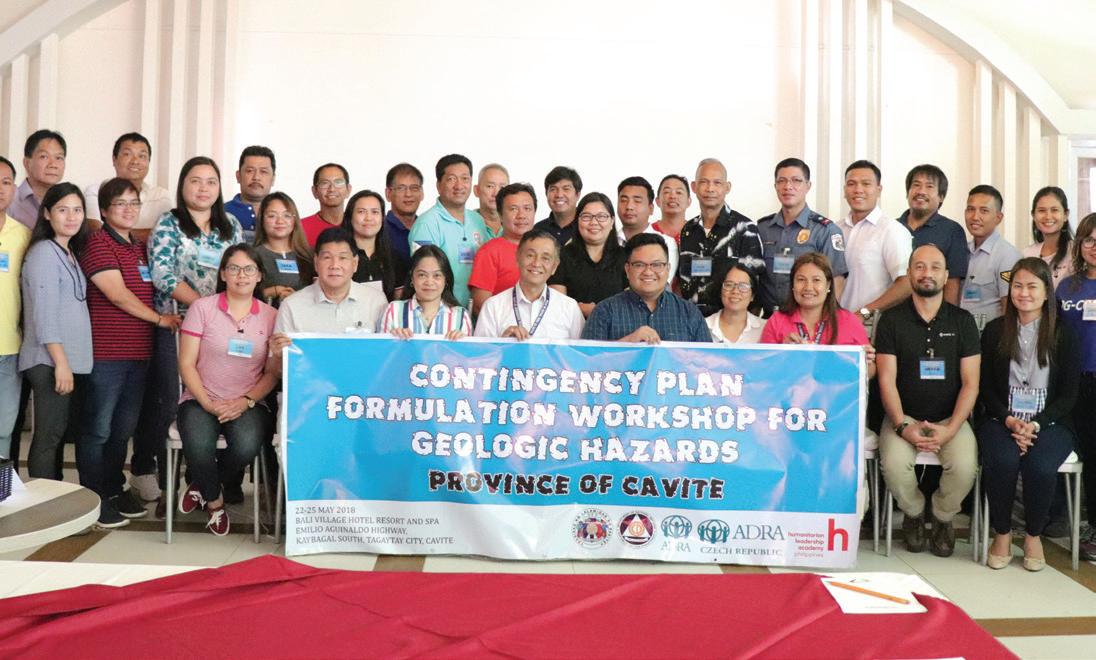
▲▲ Photos: Contingency Plan Formulation Workshop on May 22-25, 2018
▼▼ Below: Delegates of the Contingency Plan Formulation Workshop
Non-Activation
If the RDANA and the PDRRMC decide against the activation of the contingency plan, the EOC will remain on blue alert status and continue operations until the situation normalizes.
Write shop (refinement of Contingency Plan document): Selected technical people from the different clusters consolidated, reviewed and refined the contents of the CP that was deliberated during the formulation process. They transformed the contents into a working CP document.
Simulation of the Contingency Plan of Cavite: To test the coherence of the CP, a Table Top Exercise was organized for the Cavite Disaster Risk Reduction and Management Council (DRRMC). The goal was to ensure the interoperability of the response clusters, Emergency Operations Center, and the Incident Management Team of the Cavite DRRMC in response to worst-case scenarios. The exercise actors were members of the Provincial Disaster Risk Reduction and Management Council and response cluster leads.

The objectives of the Table Top exercise were to test and evaluate the draft Contingency Plan, as well as to detect and address gaps and inconsistencies. The scope of the simulation was applied to the member agencies of the Cavite Disaster Risk Reduction and Management Council.
The Table Top Exercise consisted of the following:
Part 1: Alert and Warning Part 2: Activation Part 3: Emergency Phase Part 4: Termination
Each part began with a summary of the scenarios. After the scenario update, series of injects in the form of questions were administered by designated players through facilitated discussions. Evaluations were then made in between the scenarios and injects that focused on the coherence of the participants’ responses with the Contingency Plan.
THE PROCESS
Planning Process:
The Provincial Disaster Risk Reduction and Management Office facilitated the planning process. All personnel who would be involved in the emergency planning and response activities were identified as simulation participants, namely members of the Provincial Disaster Risk Reductions Council of Cavite; officers of the Cavite Association of Disaster Risk Reduction and Management Offices (CADRREMO); and local stakeholders, including NGOs, academicians, and community-based volunteer groups. They were trained on facilitation skills and technical knowledge to address their respective disaster area, as well as relevant management procedures and information on the contingency plan in general.
Development of the Exercise:
Steps to design and develop the material for the simulation were outlined. The OCD Region IV-A technical lead created a master scenario, including references and injects based on the key actions and processes. Key presentations were also developed for the exercise, while the venue was arranged and equipment prepared.
Implementation of the Exercise:
The lead facilitator from the OCD introduced the objectives of the simulation and what hazards are to be simulated. He emphasized not to resist the scenario and only respond to the tasks.
Participants were given starting points via emergency cell broadcast coming from NDRRMC. They were advised to begin by evaluating the situation. Next, the participants were observed on how they respond to injects delivered by the facilitator. The objective was to have the participants extract information from references, analyze the materials, and then make decisions and execute key response activities accordingly.
Review of Simulation:
The lessons from the simulation were identified, analyzed, and generalized, while follow-up actions were set in order to ensure that the lessons from the facilitated learning experience are going to incorporated to the plans.
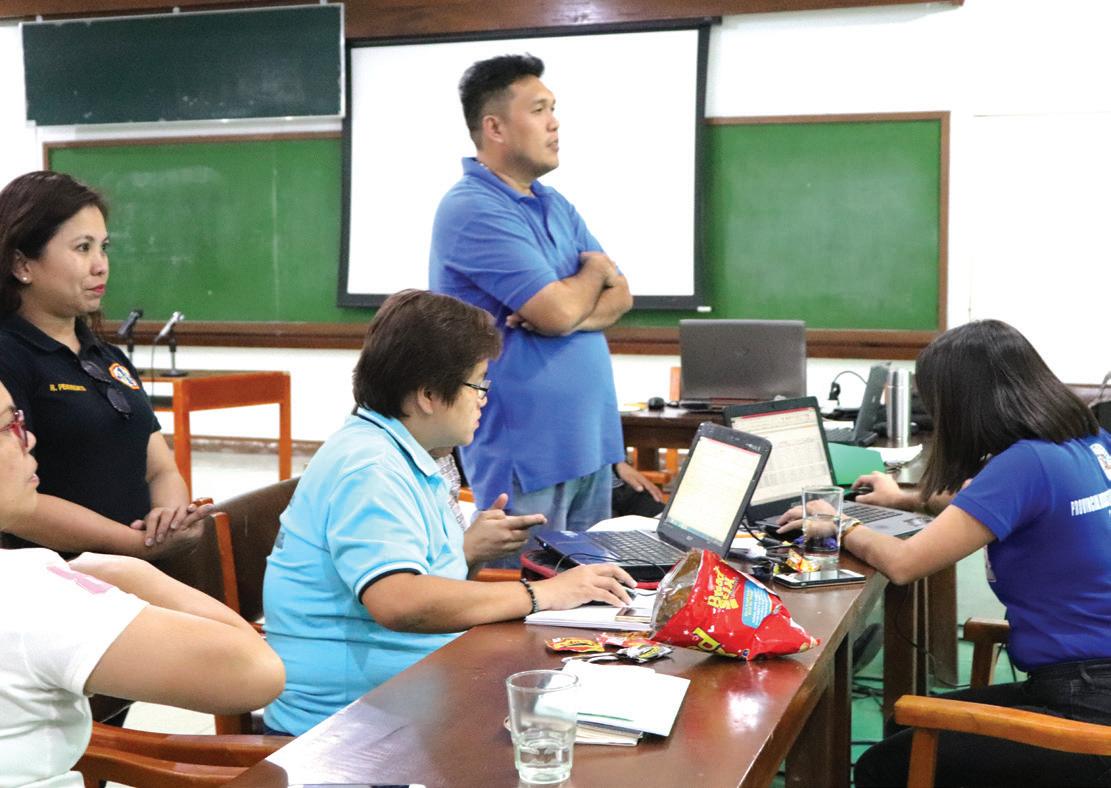

▼▼ Photos 1-3: Contingency Plan Writeshop on May 29-30, 2018 Photos 4 & 5: Table-Top Simulation on July 24, 2018

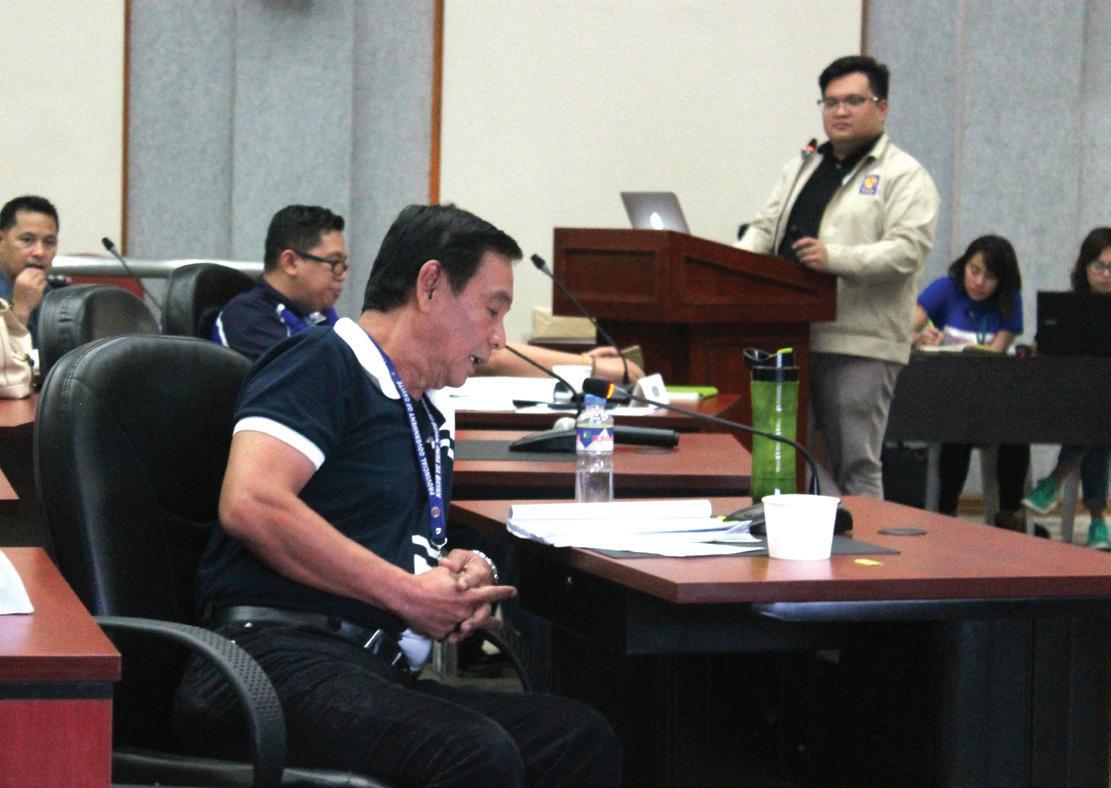
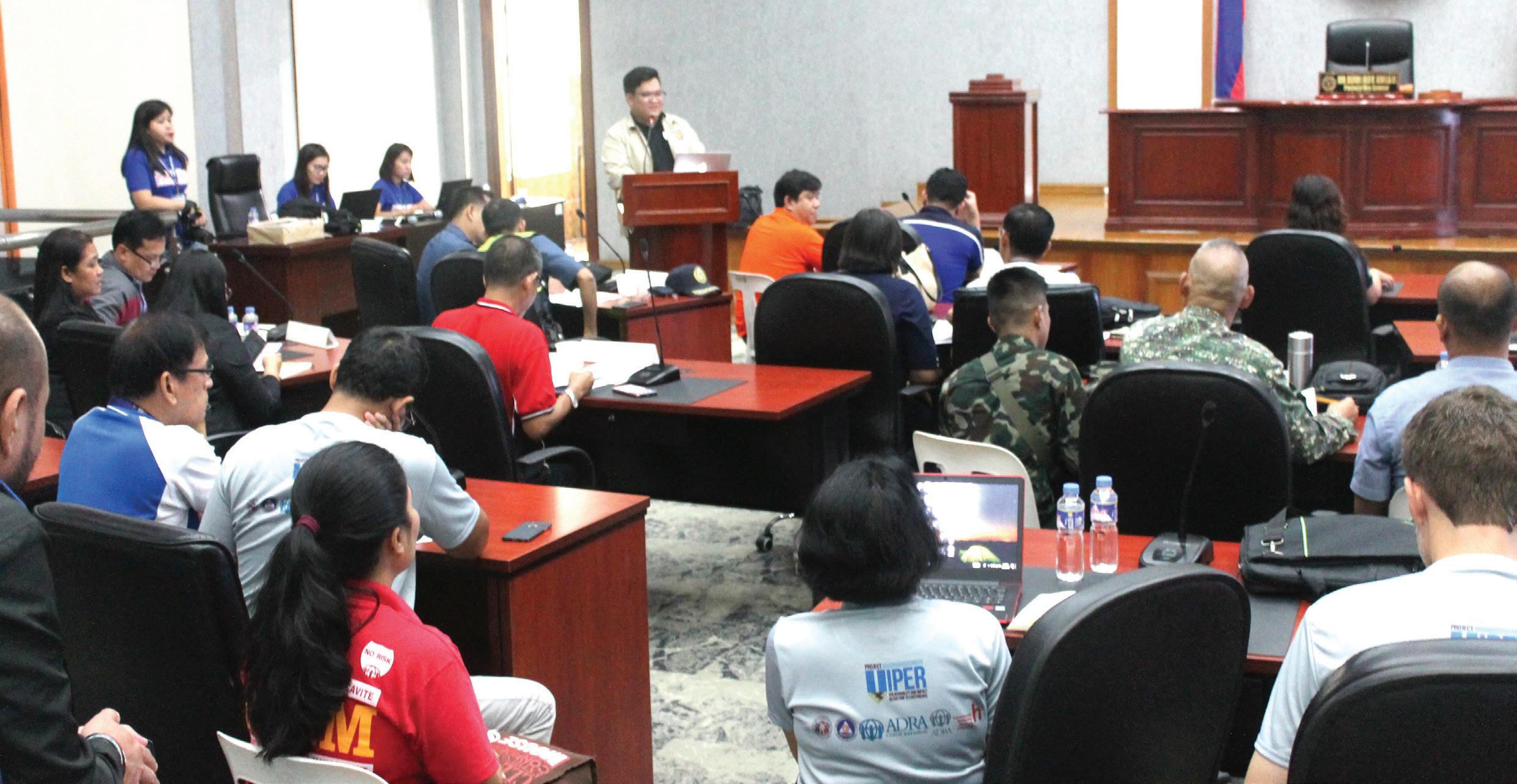
KEY SUCCESSES, CHALLENGES AND LESSONS FROM DEVELOPING THE CONTINGENCY PLAN OF CAVITE:
Good planning and preparation are the keys in crafting a good Contingency Plan.
The entire process is not easy. The drivers of the project wanted a participatory makers, such as heads of the department and
process, wherein all key stakeholders will be prepared in advance, including resource
be consulted in formulating the plan, one where all relevant actors would be involved not only in the actual planning, but in the preparation as well. In the end, it was identified that preparatory work is more tedious than the actual formulation.
Prep work makes the dream work. Gathering sufficient information during the preparatory work was one of the most important parts of the plan, and also one of the most challenging. that they can to their local disaster risk
Data and information is key in developing a realistic contingency plan, and the lack thereof can set back the entire process. However, getting enough information from various sources, from local government units to departments and agencies and the like, entailed tedious processes, strict protocols and required a lot of time.
Commitment from authorities/local officials specifically the DRMM chairman and members of the Provincial Council, was a must for the preparation of the Contingency Plan. Their backing smoothened all necessary preparations for the CP, from logistics to budget to administrative support. The involvement of decision agencies, helped in ensuring accountability and ownership.
Clusters should be prepared. There should be a cluster orientation session ahead of time to make the actual planning easier. Different clusters must be familiarized with the Contingency Plan templates. There are templates, information and data that can inventory of their respective agencies, institutional mandates and capacities, among others.
Participation of the local DRRMOs of the cities and municipalities in the Province is important. The involvement of the local DRRMOs in the preparation and actual planning was necessary and beneficial, as they provided useful input in developing the Contingency Plan. Their exposure to the process also allowed them to learn pointers is crucial. Securing support from authorities,
reduction management offices.
Partnerships, partnerships, partnerships. The involvement of the Office of the Civil Defense Region IV-A (OCD) and the Provincial Government of Cavite Office of Public Safety (PG-COPS) in the CP formulation were crucial.
On the one hand, the OCD provided technical assistance and overwhelming support for the planning from the preparatory phase to the actual formulation process. They also helped in the writeshop of the final document and the testing of the Contingency Plan. On the other hand, the PG-COPS secured the approval of local executives on the proposal to conduct the CP, organized consultation meetings and orientation sessions with different agencies and departments to get them to commit to the formulation of the plan, and took on the grueling logistical and administrative preparations throughout the process, up to the post-Contingency Plan activities.



